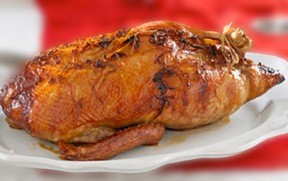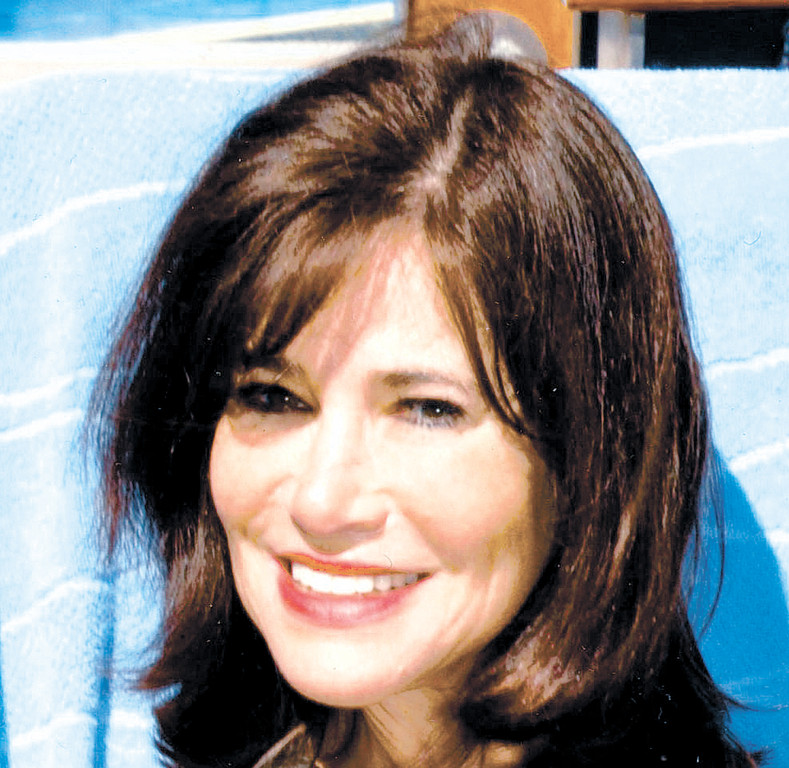Who’s in the kitchen? Sukkot and duck
Sukkot is related to the way the Jewish people lived while wandering in the desert for 40 years. As they moved from one place to another they built tents called sukkot that sheltered them. In their wildest dreams, I don’t think they could have imagined what would have evolved from those simple tents. Hey, in my wildest dreams as a kid, I couldn’t have imagined the sukkot that are around today.
As early as I can remember, living on 48th Street in Boro Park, my dad, with my brother helping, assembled our sukkah. My dad purchased the lumber from a lumberyard and my grandfather supplied beautiful cloth from his curtain and fabric store in the Lower East Side. Living on the third floor of a private house and having a large porch facing the front of the street, it was the perfect setting. My dad was very handy, so our sukkah’s frame was sturdy and very professional looking. The heavy, beautiful brocade fabric made it one of a kind. The Schach seemed like hundreds of bamboo poles, each one put on individually. There were no mats in those days. Decorations were handmade. I still remember the ones made of colorful paper strips taped together as rings and made into a long chain (come on, you all know what I’m talking about). We were so proud of those when they were finished. They were long enough to string from one side of the sukkah to the other. How proud we all were when our handy work was up for all to see…that is until it rained and they got soggy, started to unglue, and eventually end up falling off in pieces.
Fast forward to the present. Sukkahs are now prefabricated and come as big or small as your heart desires. They’re made of a variety of materials, shapes, sizes, and colors. Plastic grapes, small feathery birds, shiny metallic hanging decorations, and ears of corn are long gone. Today we can choose from either silk or live “flower balls”--a bargain starting at $50 each. Stores open on the avenue filled with decorations and the lines are out the door. For those not creative, or short on time, you can have a decorator come in and decorate your entire sukkah. Walls can be draped with any material you like and decorations know no limit. That lone light bulb in the middle of sukkah, or for those who were fancier in those days and had a florescent light fixture, can now be replaced with chandeliers that are modern or traditional. Gone are the small folding tables. In its place there are numerous outdoor heavy duty tables that enable us to have banquet style tables that are 60” by 12 feet (I’m guilty of that one).
When I married Jerry a few years back and three kids became seven, with three of them married, my 10 x 12 sukkah was not going to work. My mother in law generously treated us to a 12-20 sukkah. Jerry warned me that he wasn’t handy. Hmmm, I’d take “not very handy” but we’re talking downright, absolutely bumbling and clueless when pertaining to technological, mechanical or anything practical. Except of course changing the air conditioner filters--he was so proud when he mastered that one! When the sukkah arrived, he said my boys would have to put it together. The first and last one he assembled took all day and when he walked around it to admire his accomplishment he was puzzled as to why all the writing on the walls was on the outside and not the inside. It’s not easy to build a sukkah totally inside out. So the building responsibility became my kids’. Once the chag starts, we pray that it doesn’t rain, is not too hot or too cold, and definitely not too windy.
Though times have changed, it’s still a favorite yom tov of most people, especially the kids. Let’s not forget those sukkah hops. My son Daniel came home at age eight with two huge Gourmet Glatt bags filled with snacks one year. “Who gave you those bags?” I asked. “I took the bags from home and just dumped the plates with snacks into them, cool, huh?” he replied. To this day there is a rule at the Young Israel of Woodmere sukkah hops that remains in effect from that day. NO BAGS ALLOWED, JUST WHAT YOU CAN EAT IN THE SUKKAH. Sorry kids.
Whether you’re home for sukkot, at relatives or slumming it in five star hotels in Israel, have a chag sameach!
Here’s a dish I’ll be making for Sukkot; thought I’d share it with you.
ORANGE GLAZED DUCK
INGREDIENTS:
•3 (4 to 5 pound) ducks
•Salt and pepper, to taste
•2 1/4 cups fresh orange juice (if not possible substitute the bought variety)
•6 tablespoons soy sauce
Preheat oven to 375 degrees F.
Fill a large pot with salted water and bring to boil. Pierce duck breast several times, then lower into water (careful not to let the boiling water splash on you) Boil for 10 minutes, then drain and pat dry.
Season the duck with salt and pepper, according to taste, including the cavity. Fill a roasting pan with one cup water for each duck, and put a rack on top of it. Put the duck on the rack. Bake for 30 minutes.
After you put the duck in the oven, make the glaze: mix together the orange juice and soy sauce in a mixing bowl. After the ducks have roasted for 45 minutes, brush the ducks with glaze and return to the oven. Repeat three more times, every ten minutes until the duck has roasted for 30 more minutes (a total of 1 ¼ hours) or until clear juices run from thigh joint when pierced. You can prepare ahead of time, but make sure just to reheat, and not cook the duck further.
Judy Joszef can be reached at judy.soiree@gmail.com

 47.0°,
Light Drizzle Fog/Mist
47.0°,
Light Drizzle Fog/Mist 







